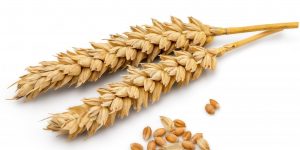Wheat is one of the most important crops in human history, serving as a staple food source for billions of people around the world. In this blog, we will explore the history, cultivation, and uses of this essential grain.ğ

History
Wheat has been cultivated by humans for thousands of years, with evidence of its domestication dating back to the Neolithic era. It is believed to have originated in the Fertile Crescent region of the Middle East, which includes modern-day Iraq, Syria, and Turkey.
As civilizations developed, wheat became a vital crop for sustaining large populations. In ancient times, wheat was the primary crop in the diets of the Greeks, Romans, and Egyptians. The development of agriculture and the domestication of wheat allowed humans to settle in one place and form complex societies.
Cultivation
Wheat is a versatile crop that can be grown in a wide range of climates, from arid deserts to temperate regions. It requires well-drained soil and plenty of sunlight, and is typically sown in the fall and harvested in the summer.
There are several different varieties of wheat, including hard wheat, soft wheat, durum wheat, and spelt. Each variety has different characteristics that make it suitable for different purposes, such as making bread, pasta, or cakes.
Uses
Wheat is a highly nutritious food source, providing carbohydrates, fiber, protein, and essential vitamins and minerals. It is used to make a wide variety of foods, including bread, pasta, crackers, cereals, and snacks.
Bread is perhaps the most well-known use of wheat. It is made by mixing flour, water, yeast, and other ingredients, and then baking the dough in an oven. The resulting bread can be sliced, toasted, and used in sandwiches, or served with butter or jam.
Pasta is another popular use of wheat. It is made by mixing wheat flour with water or eggs, and then shaping the dough into various forms, such as spaghetti, lasagna, or macaroni. Pasta can be served with a variety of sauces, such as tomato, pesto, or alfredo.
In addition to food, wheat is also used in a variety of non-food products. It is used to make paper, cardboard, and other packaging materials, as well as biofuels and industrial chemicals.
Conclusion
In conclusion, wheat is a vital crop that has played a significant role in human history and civilization. Its cultivation and use have allowed humans to settle in one place and form complex societies, and its nutritional value has sustained billions of people around the world. Understanding and appreciating the importance of wheat can help us better appreciate the ways in which agriculture has shaped our world.



















Add Comment